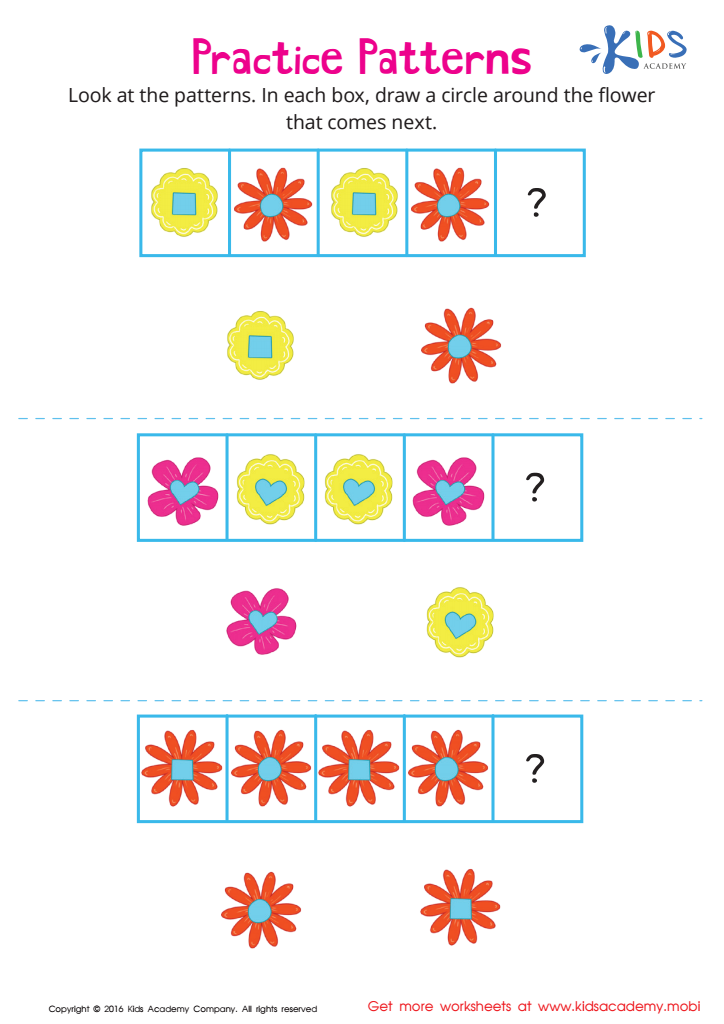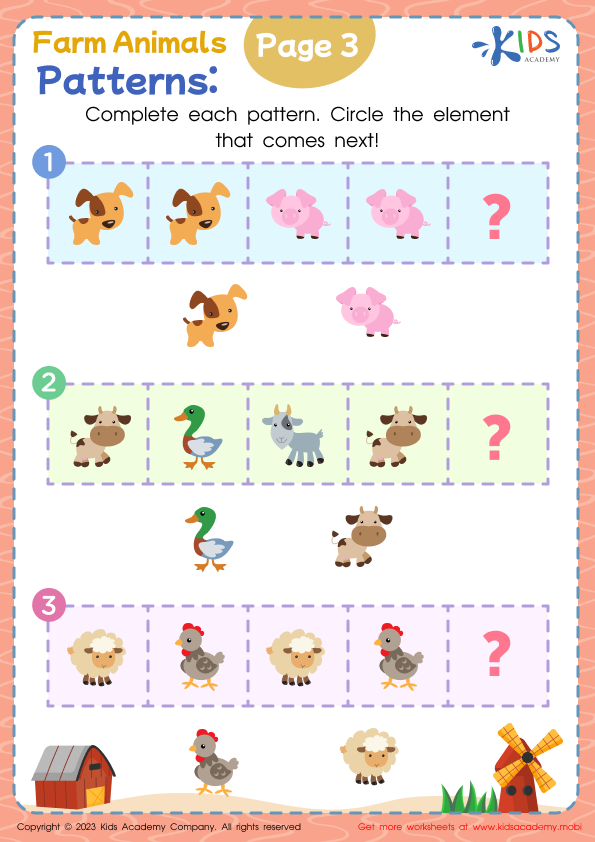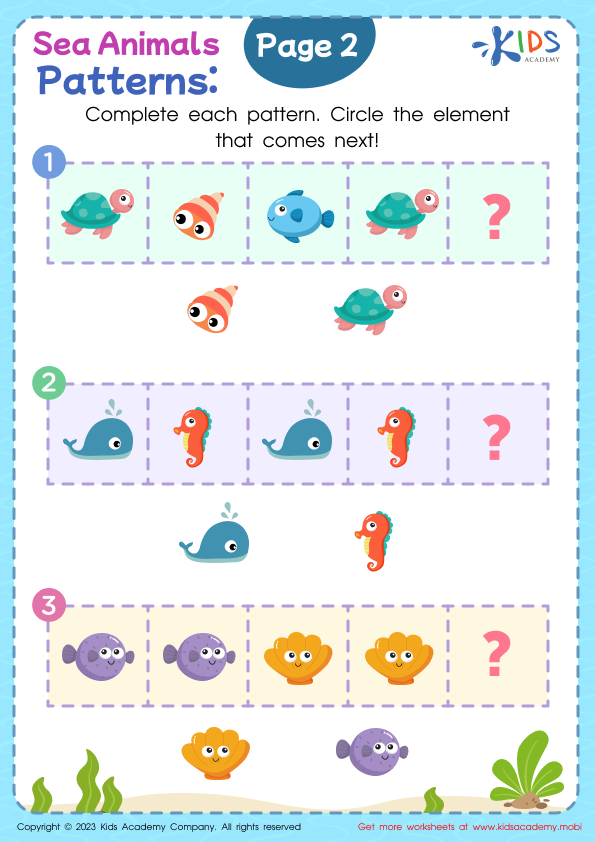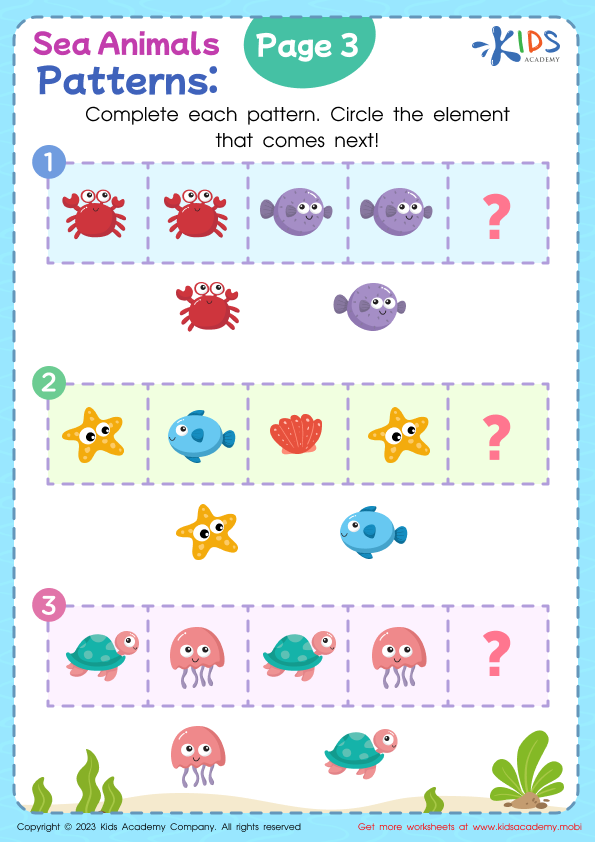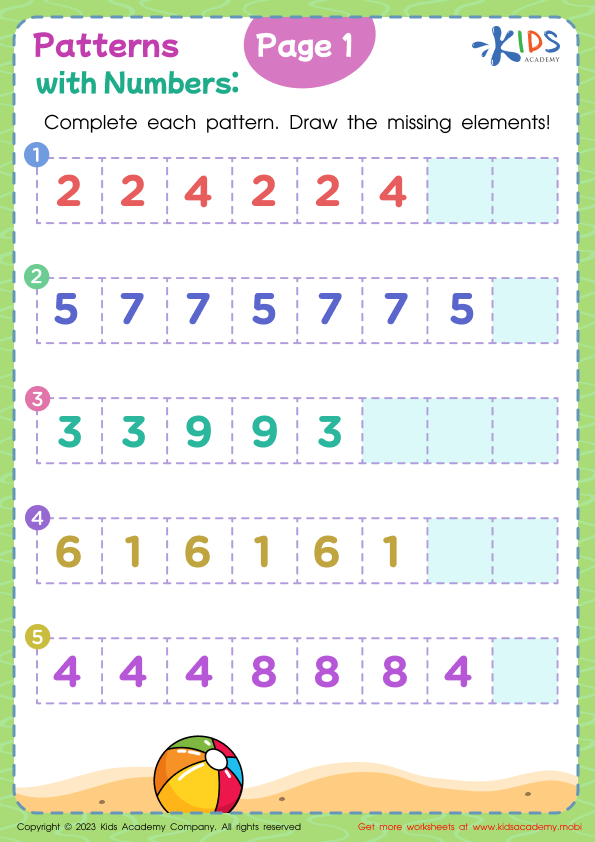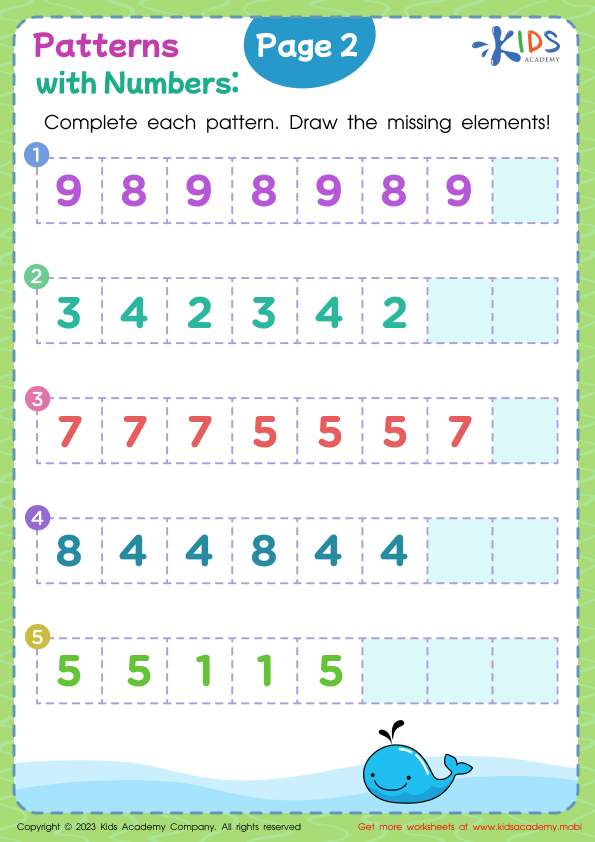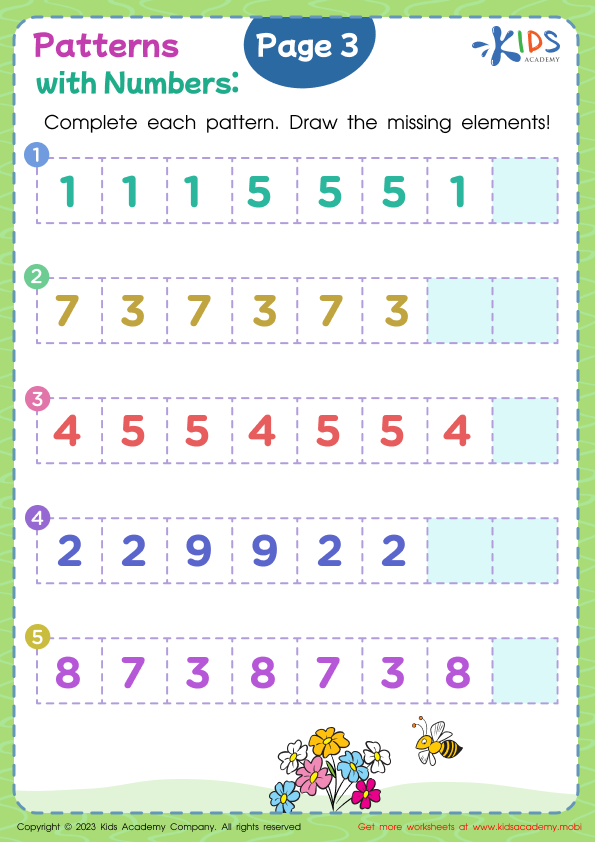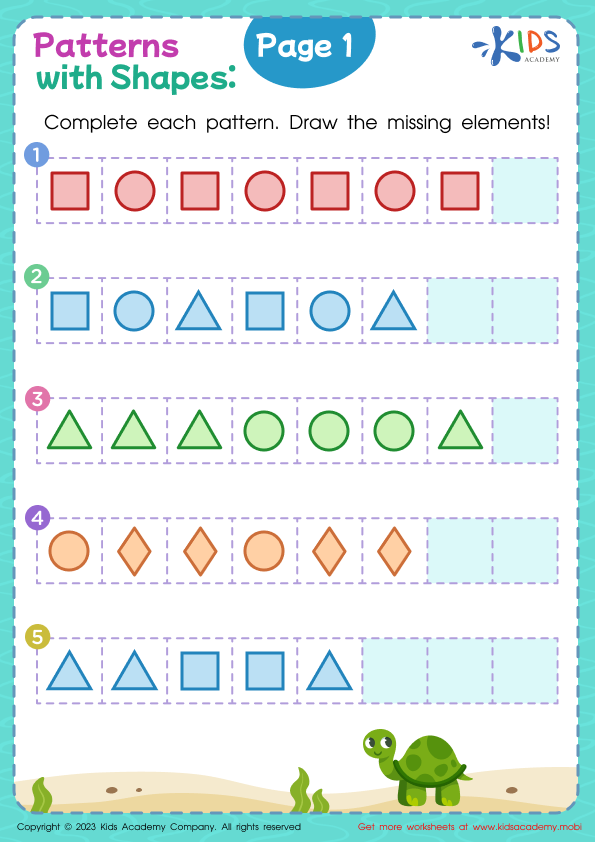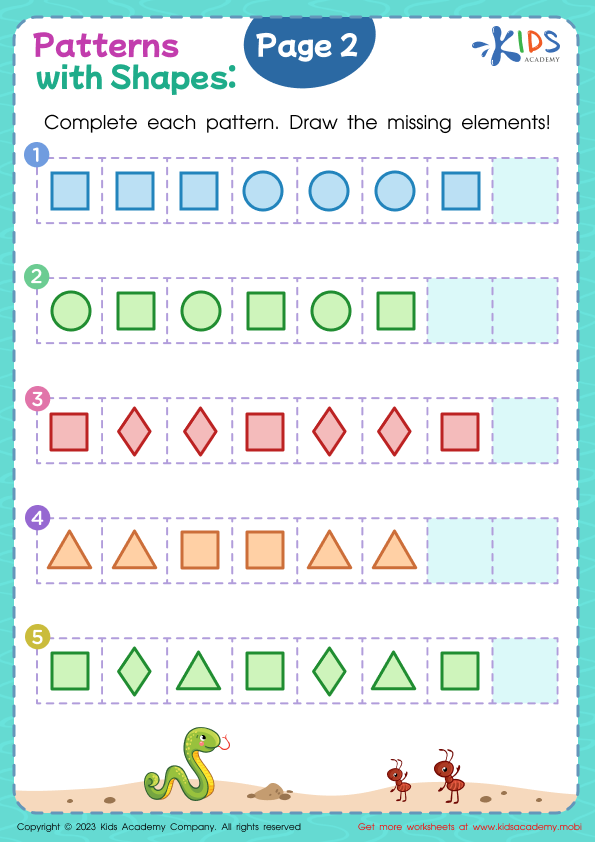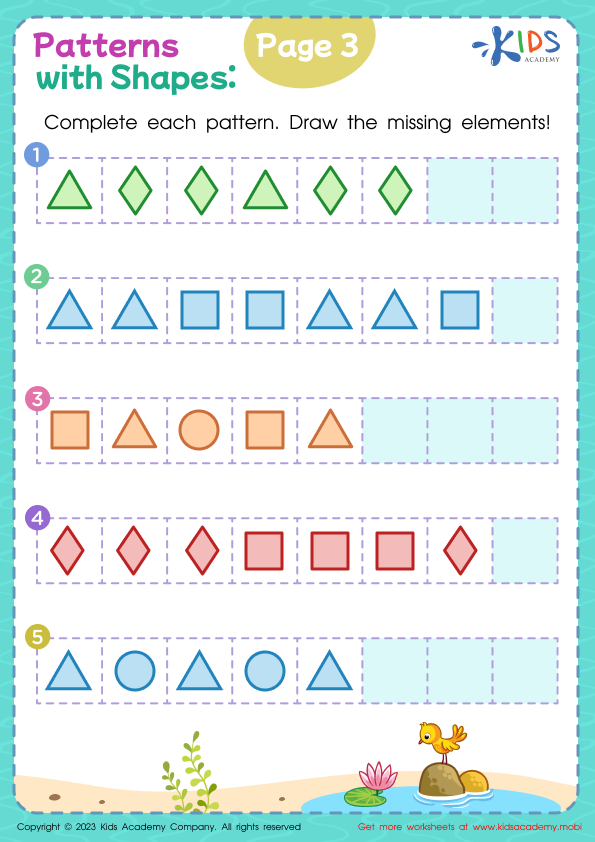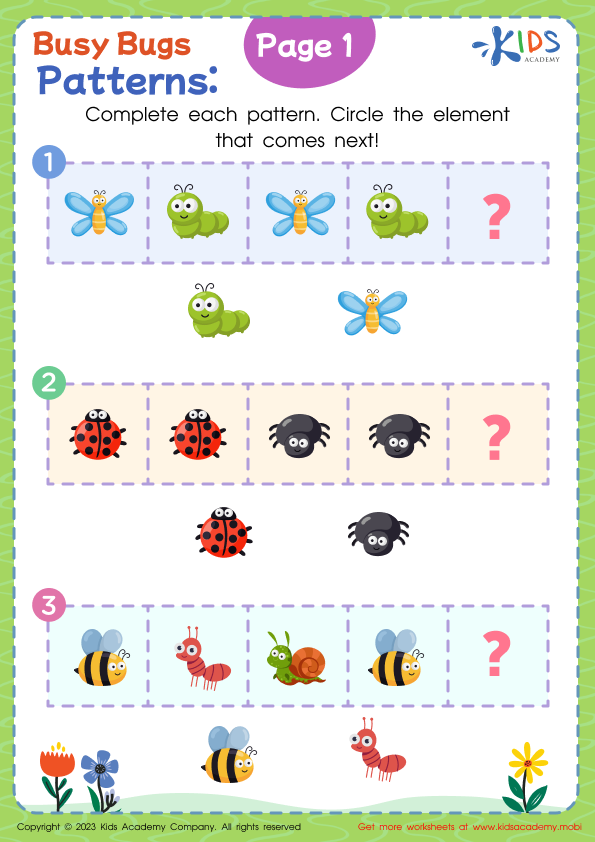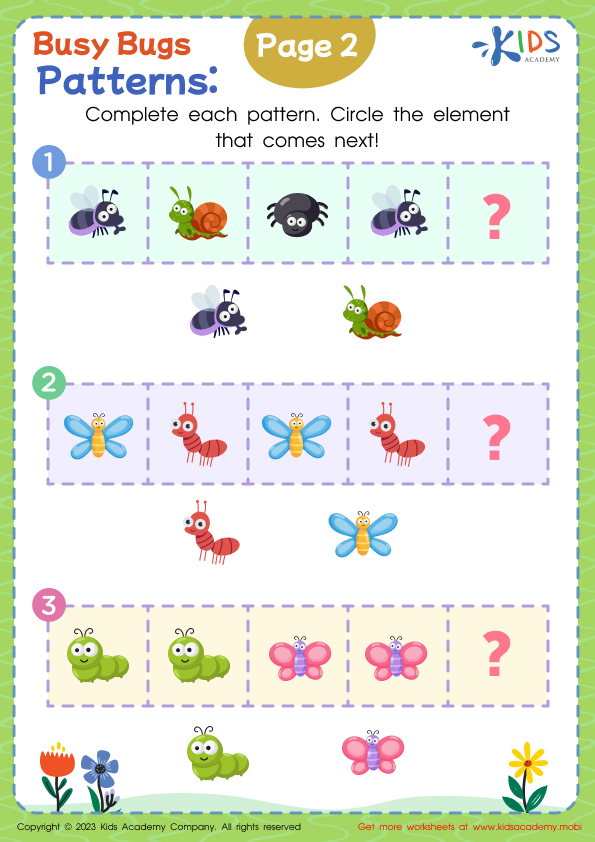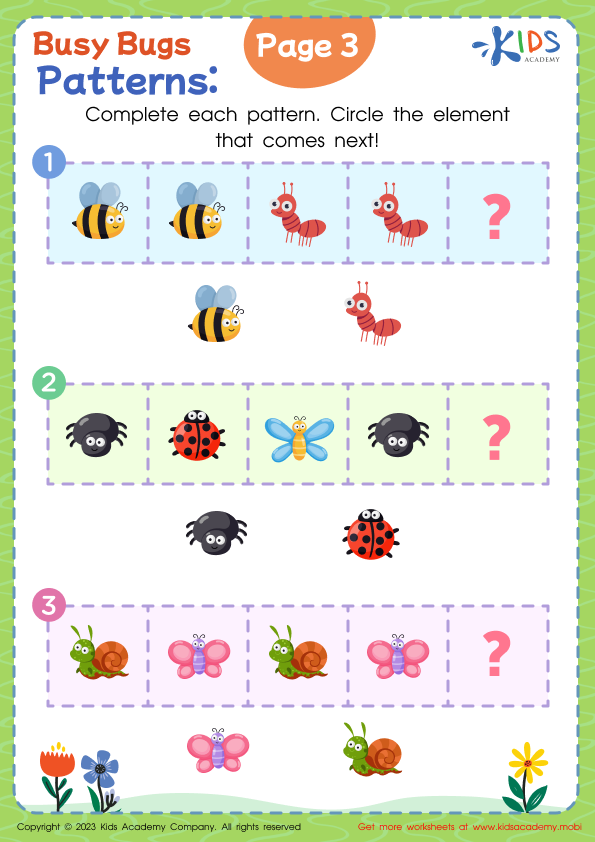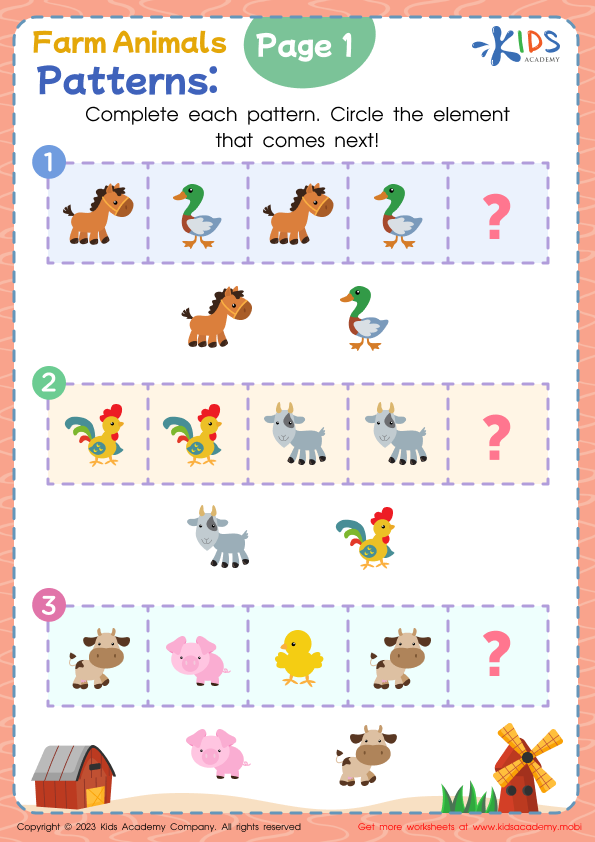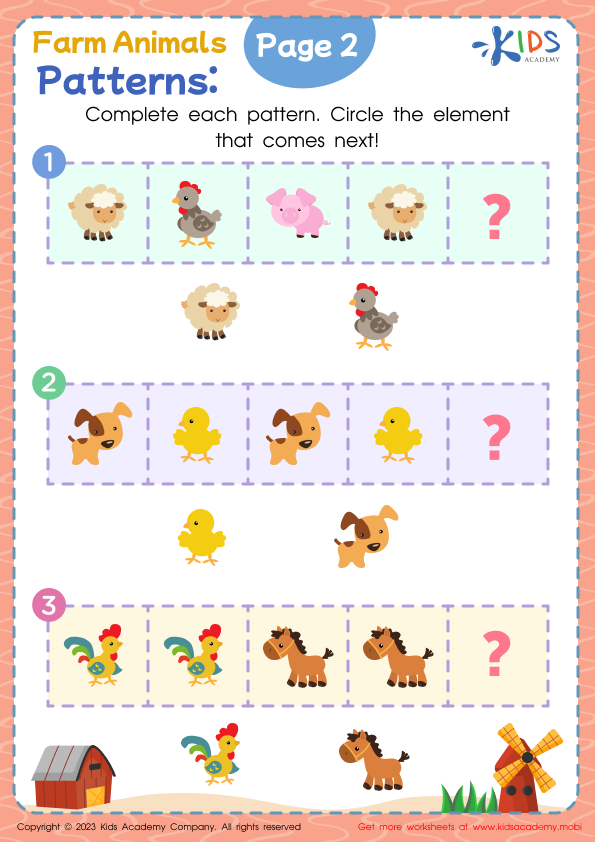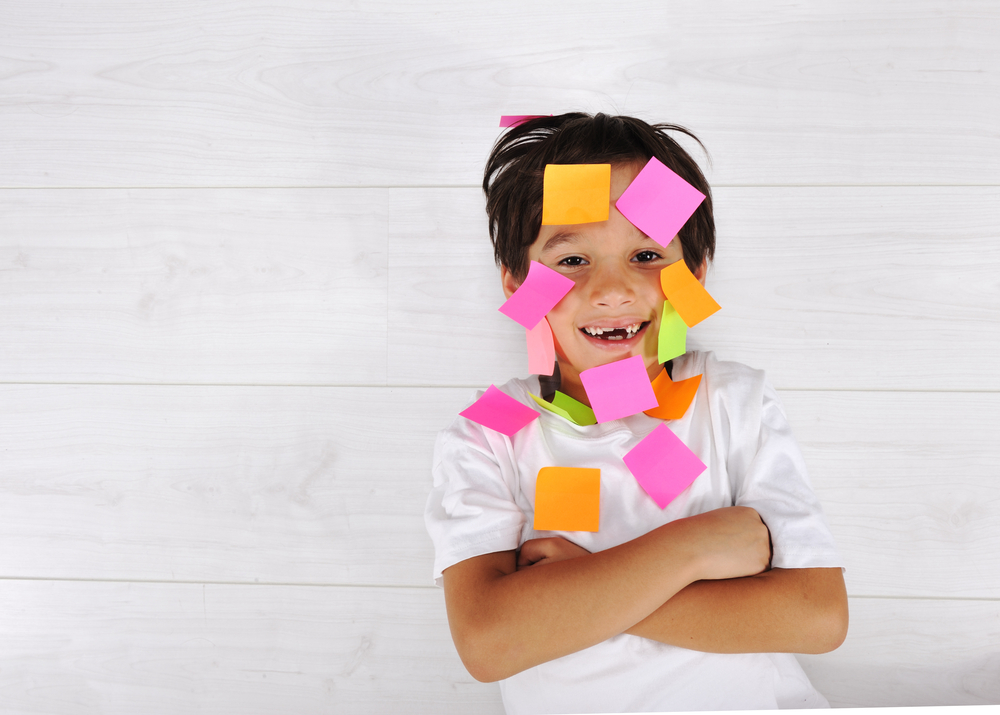Patterns Worksheets for Ages 3-7
21 filtered results
-
From - To
Discover our engaging Patterns Worksheets designed for children aged 3-7, perfect for enhancing early math skills! These vibrant and interactive worksheets help young learners identify, create, and extend various patterns using shapes, colors, and objects. Ideal for preschool and kindergarten classrooms, our materials foster critical thinking and boost confidence in mathematical concepts. With easy-to-follow instructions and appealing visuals, children will enjoy exploring patterns while developing essential problem-solving skills. Enjoy printable worksheets that are tailored to your child's learning needs, making math both fun and educational. Visit our page to access these valuable resources and embark on an exciting learning journey!
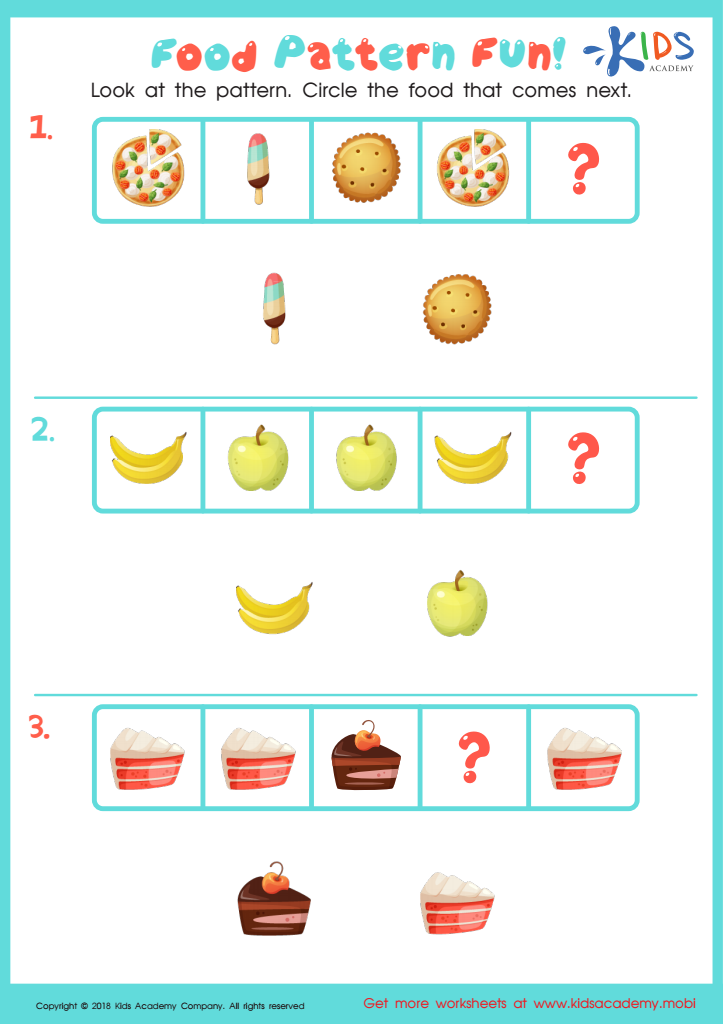

Food Pattern Fun Worksheet
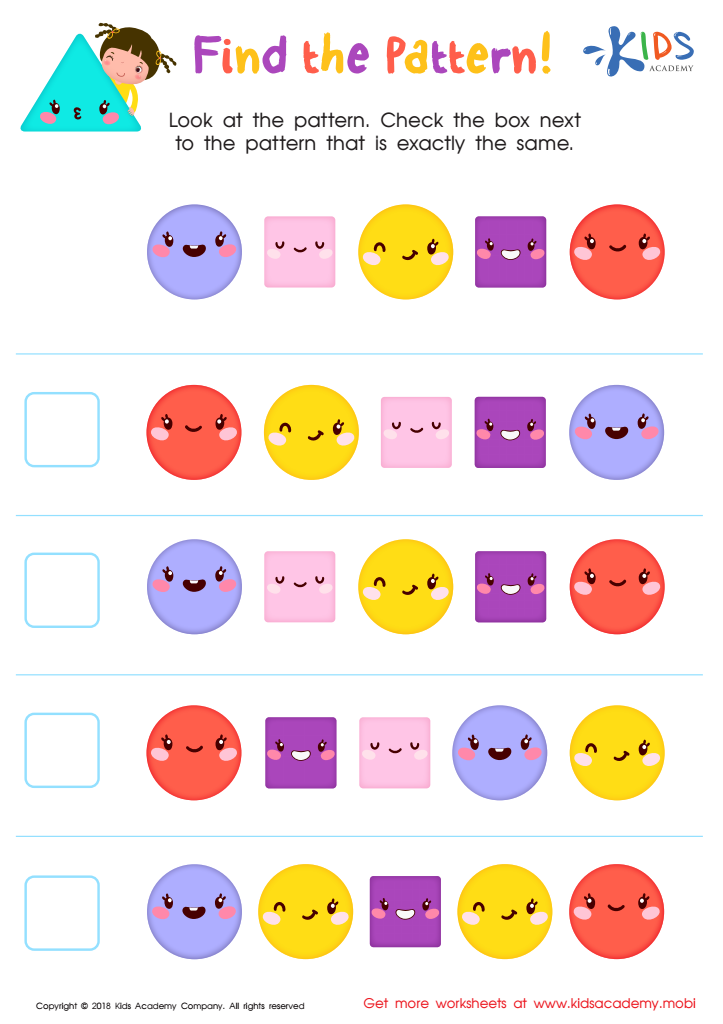

Find the Pattern Worksheet
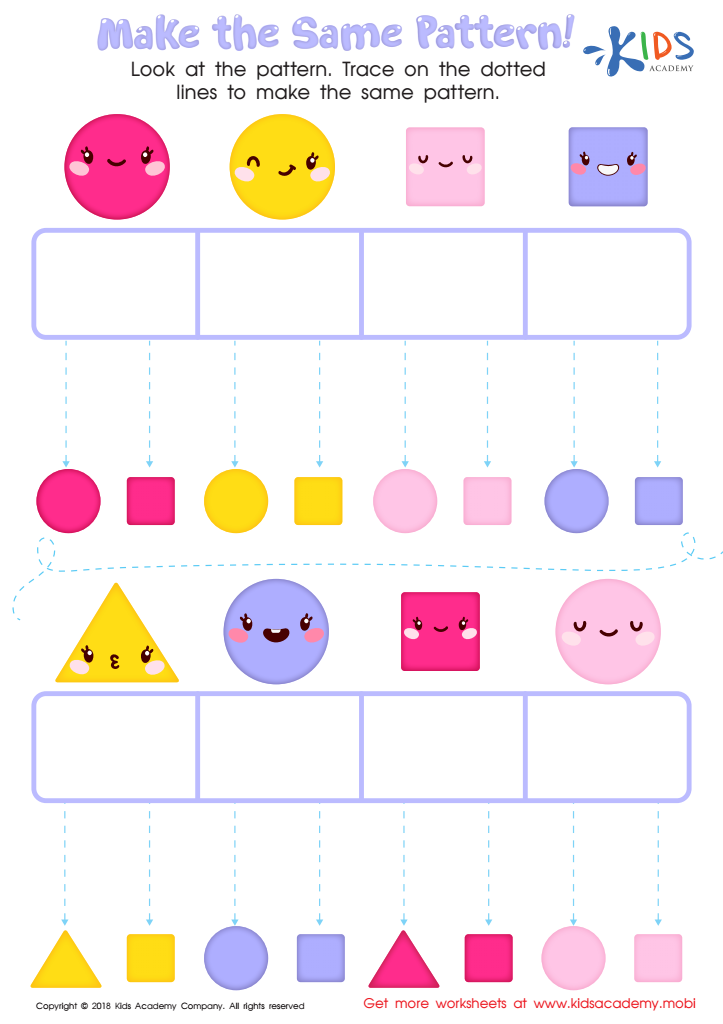

Make the Same Pattern Worksheet
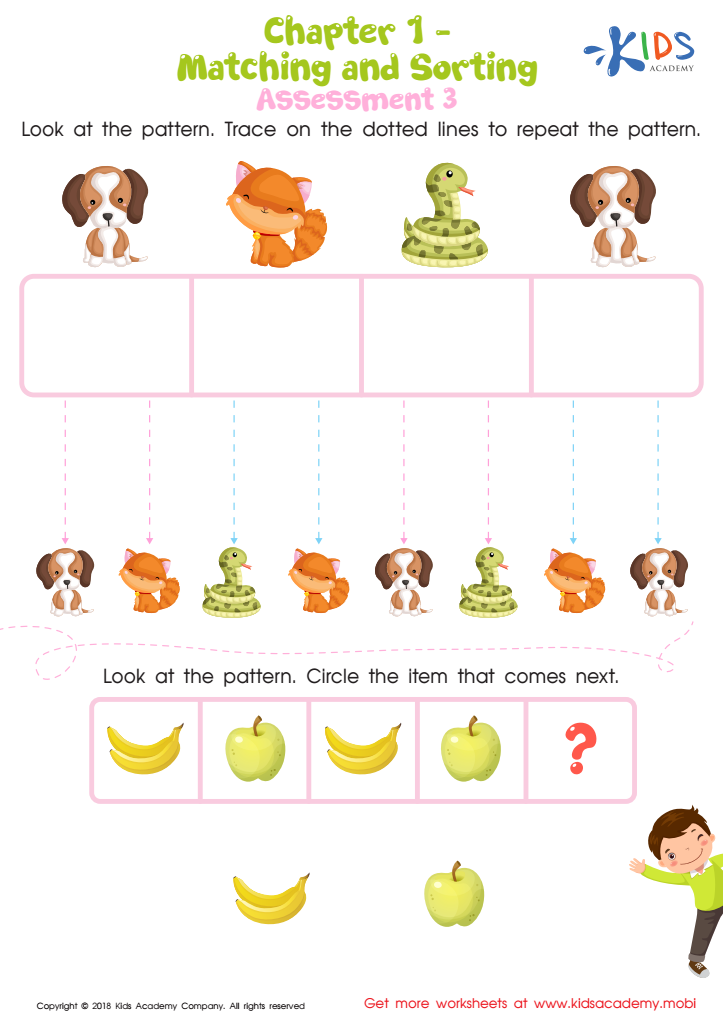

Matching and Sorting for Preschool: Assessment 3 Worksheet
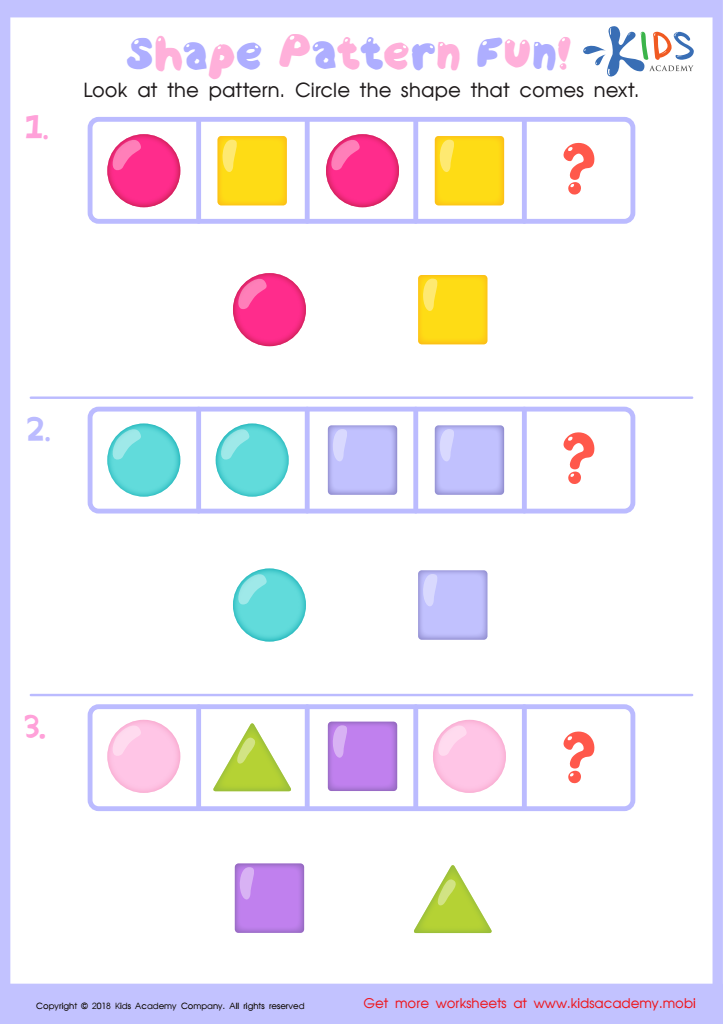

Shape Pattern Fun Worksheet
Understanding patterns is fundamental for children aged 3-7, as it lays the groundwork for critical thinking, problem-solving, and mathematical skills. Parents and teachers should prioritize pattern recognition because it enhances cognitive development by encouraging children to observe, compare, and predict. Recognizing patterns helps children to make connections in various areas, whether in math, language, or social interactions.
Moreover, early exposure to patterns fosters a sense of order and predictability, which can promote confidence and a love for learning. Engaging children with patterns—through songs, art, or daily routines—supports their ability to categorize information, leading to improved analytical skills. Encouraging pattern exploration also nurtures creativity, providing opportunities for self-expression while developing logical reasoning.
Finally, an understanding of patterns prepares children for more advanced concepts in mathematics, science, and even literacy. By integrating games and hands-on activities revolving around patterns, parents and teachers can create an engaging learning environment. This early focus not only aids academic growth but also cultivates lifelong skills that will benefit children in various aspects of their lives. Thus, the significance of patterns cannot be overstated, making it essential for parents and teachers to promote this vital area of learning.

 Assign to My Students
Assign to My Students

